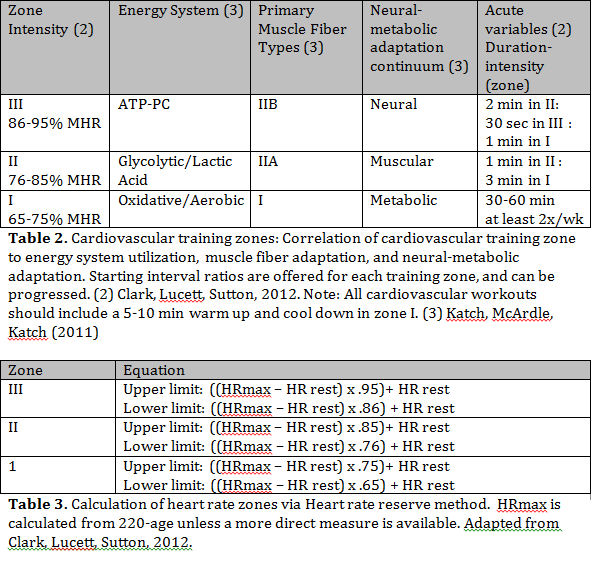By Meredith Butulis DPT, MSPT, ACSM HFS, NASM-CPT, CES, PES, BBU Pilates Studio Certified, Life Time Academy Instructor
Note: This article is for advanced program design and assumes a working knowledge of exercise physiology including energy systems, anaerobic threshold, muscle fiber types, acute variables, and periodization.
Can cardiovascular training improve muscular endurance and strength? Can resistance training improve cardiovascular endurance? What about HIIT workouts? Ultimately performance improvements rely on the same systems of the body: cardiovascular, respiratory, musculoskeletal, and neurological. If we want to maximize improvements, we can ensure that resistance training programs and cardiovascular programs send consistent messages to the body systems at specific times to create optimal outcomes. There are many models of periodization, or ways in which to vary a program over time for optimal gains. Many of them focus on either resistance training or cardiovascular training. Let’s explore how to match them together, and why.
Why?
Resistance training can improve lactate thresholds, muscular coordination, glucose utilization, muscular endurance, muscle fiber recruitment, and hemoglobin/myoglobin functional capacity (Aaberg, 2007). All of these factors lead to improved cardiovascular performance.
Cardiovascular training can improve all of the same elements. (Katch, et al, 2011).
Resistance Training Phases
After developing an initial base and level of comfort with training, resistance training progressions can be grouped into three basic phases: endurance, hypertrophy, and power. Each of these phases demands that the acute variables of sets, repetitions, rest, intensity, and tempo match in order to achieve the primary goals of each phase.
This ensures that the adaptations that occur in the energy systems, muscle fiber types, and neural-muscular-metabolic continuum match. This then allows the body to receive consistent messages from all of its systems to maximize predictable outcomes.
See also this blog on EPOC for another perspective on these training modalities.
Table 1 summarizes each phase, its defining acute variables, and primary adaptations in each system.
 Cardiovascular Training Phases
Cardiovascular Training Phases
Cardiovascular training goes well beyond training endurance, VO2 max, and lactate threshold. The selected intensities, intervals, and durations not only define a particular zone of training, but also determine the adaptations of the energy systems, muscle fibers, and nervous system. Table 2 summarizes each of three zones of training, acute variables and intervals that make up training in this zone, and the primary adaptations. Notably, in this classification system, anaerobic threshold occurs in zone II. Table III offers the equations to calculate exact heart rate numbers for each zone.
Matching Resistance and Cardiovascular Training
Now that we have summarized the primary adaptations in each of the body systems in each phase of resistance and cardiovascular training, let’s match them to deliver predictable and progressive outcomes. You will notice that there is a pattern in comparing adaptations in Table 1 and Table 2. Power resistance training and zone III cardiovascular training revolve around similar physiological adaptations. This pattern can also be seen for hypertrophy training paired with zone II cardiovascular training, and endurance training paired with zone I cardiovascular training.
This relationship is summarized in Table 4. Table 4 can serve as a quick reference to match endurance training with cardiovascular training phases.
Conclusion
In conclusion, this article can serve as a valuable reference for the matching of cardiovascular and resistance training programs to ensure that the body receives consistent messages from all of its systems to reach predictable adaptations and outcomes with safety and appropriate recovery in mind.
There are many methods of periodization, as well as variation in definitions and progressions available in the field of fitness. This can serve as a framework from which to build and alter as appropriate for your individual clients and training method preferences.
References
Aaberg, E. (2007). Resistance Training Instruction. 2nd Ed. Human Kinetics: Champaign
Clark, Lucett, Sutton, 2012. NASM Essentials of Personal Training. 4th Ed. Wolters Kluwer Health: Philadelphia.
Katch, VL, McArdle, WD, Katch, FI. (2011). Essentials of Exercise Physiology. 4th Ed. Wolters Kluwer Health: Philadelphia



















